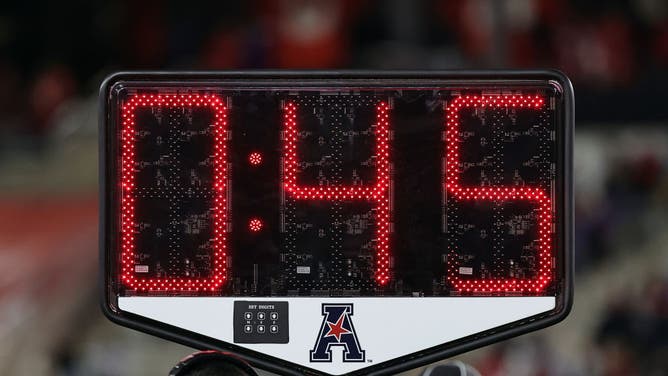New College Football Rule Would Keep Clock Running After First Downs
The NCAA is expected to pass a new rule that would keep the game clock running after every first down except in the final two minutes of each half.
If passed, the rule would effect all football divisions except Division III.
The clock stoppage, which was implemented in 1968, was one of the few remaining differences between college football and the NFL.
The reasoning behind the new clock rule? Game length.
It's believed that the new change will result in seven fewer plays per game, according to a member of the NCAA Football Rules Committee.
Wow, seven whole plays! That'll make such a huge difference.
Of course if they really wanted the games shorter, they could just cut out a TV timeout or shorten the commercial lengths. But no, that can't happen because college football fans of all ages need to hear the Kars 4 Kids commercial because if we haven't donated our cars yet, maybe today will be the day!

The NCAA is expected to pass a new clock rule regarding first downs. (Photo by Bob Levey/Getty Images)
The old clock rule stopped the clock after every first down until the referee set the ball and whistled it to start again. It allowed both the offense and defenses to regroup, but also was favorable to pass-heavy teams as the quarterback and receivers were able to regroup.
The rule was proposed by the Football Rules Committee in March to the NCAA's Playing Rules Oversight Panel (PROP). Georgia head coach Kirby Smart, who is a member of the Committee said at the time that, "This rule change is a small step intended to reduce the overall game time and will give us some time to review the impact of the change."
OTHER RULE CHANGES
In addition to the new clock rules, teams will no longer be allowed to take consecutive timeouts. This practice usually happened when teams would try to ice a kicker during field goal attempts towards the end of each half. They will now only be allowed to take one timeout.
Also, all penalties at the end of the first and third quarters will carry over to the start of the next quarter.